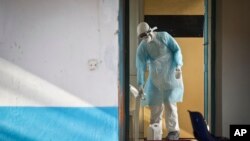The figures are a provisional toll based on lab-confirmed tests as of April 21, the nation's health ministry said in an update, adding that 116 people were currently being monitored as contact risks.
The first known deaths were documented on January 7 in the eastern province of Kie-Ntem before the outbreak spread to Bata, the West African nation's economic capital.
The latest known fatality occurred on April 11, the ministry said.
Marburg causes severe fever, often accompanied by bleeding and organ failure.
It is part of the so-called filovirus family that includes Ebola, which has caused several deadly epidemics in western and central Africa.
The World Health Organization (WHO) last month urged Equatorial Guinea to report all virus cases to it. The agency's concern is that a wide-scale epidemic could erupt, affecting neighbouring Gabon and Cameroon.
The suspected natural source of the Marburg virus is the African fruit bat, which carries the pathogen but does not fall sick from it.
Fatality rates in confirmed cases have ranged from 24 percent to 88 percent in previous outbreaks, depending on the virus strain and case management, according to WHO.
There are currently no vaccines or antiviral treatments, but potential treatments, including blood products, immune therapies and drug therapies, as well as early candidate vaccines, are being evaluated.
The virus takes its name from the German city of Marburg, where it was first identified in 1967, in a lab where workers had been in contact with infected green monkeys imported from Uganda.
Now Dozen Dead From Marburg in Equatorial Guinea

MALABO, EQUATORIAL GUINEA - The death toll in Equatorial Guinea from an outbreak of Marburg virus, a cousin of Ebola hemorrhagic fever, has risen to 12, the health ministry said on Monday.






